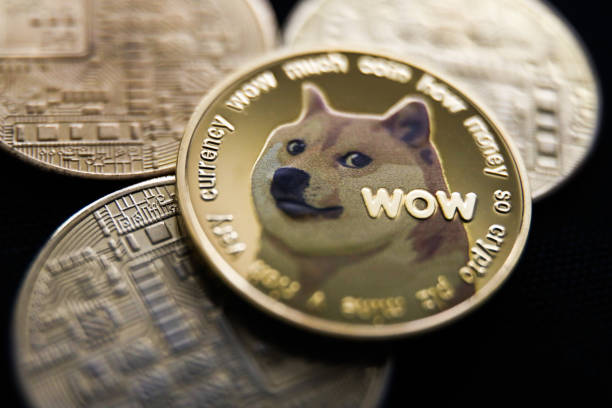Crypto Twitter has been immersed in the speculation and anticipation of the eventual approval of the spot Bitcoin (BTC) exchange-traded funds (ETFs) in the United States.
After some turbulence caused by an alleged fake tweet from the U.S. Securities and Exchange Commission, all 10 spot Bitcoin ETFs were approved.
The ETF hangover is over, and attention can now shift to the next big event: the Bitcoin halving. The biggest Bitcoin event has less than 100 days to go. The past halvings have directly correlated with Bitcoin’s bull runs, but could the spot Bitcoin ETFs influence the price of BTC in this halving cycle, interfering with short- and long-term Bitcoin price predictions?
What is the Bitcoin halving?
The Bitcoin halving is an event that occurs approximately every four years, reducing the rate at which new BTC units are generated and earned by miners in the Bitcoin network. Specifically, miners’ reward for validating and adding new blocks to the blockchain is reduced by half.
The initial reward started at 50 BTC per block, and after each halving event, it decreased by half. The most recent halving occurred in May 2020, reducing the reward to 6.25 BTC per block. The next Bitcoin halving, estimated to occur in mid-April 2024, will reduce the Bitcoin mining rewards to 3.175 BTC per block.
This process is programmed into the Bitcoin protocol. It is designed to create scarcity, mimicking the scarcity of precious metals like gold. The cryptocurrency community closely watches the halving events, as they impact the overall supply of Bitcoin and can have implications for market dynamics and the value of the cryptocurrency.
Bitcoin is a relatively young digital asset with a short history. Many fundamental analysts find it hard to provide a precise value due to its novelty and alleged revolutionary factors.
Looking at Bitcoin’s history, the halving has had a consistent effect on the price of Bitcoin.
Halving 2012: Bitcoin is dead
The first halving occurred on Nov. 28, 2012, and reduced the block reward from 50 to 25 BTC. The price of BTC at the time of the halving was $13, peaking the following year at $1,174.

In 2012, Bitcoin wasn’t taken too seriously by the mainstream. It was popular among cypherpunks, which nurtured the technology from its infancy. The price of BTC became a marketing tool for the digital asset once it surpassed the benchmark of $1,000, making headlines in the mainstream media.
As Bitcoin was an unknown intangible asset many didn’t comprehend, it was condemned as dead once the price pulled back to $200. The phrase “Bitcoin is dead” would become common in the media in the following years, but the digital asset survived.
Halving 2016: The retail speculation bubble
The second halving transformed Bitcoin from an underground cryptocurrency into a legitimate asset class. The halving occurred on July 16, 2016, reducing the block reward to 12.5 BTC. The price at the time of the halving was $664; the following year, it peaked at nearly $20,000.

Retail investors jumped into the new wave of altcoins, pushed by the initial coin offering (ICO) boom, which was made possible thanks to the new attributes offered by Ethereum’s blockchain. ICOs flooded the market, but many were incomplete projects, and some were outright scams, bringing much criticism to the crypto market as a whole.
Recent: Impact of Bitcoin ETFs: ‘Revolutionary change’ or colossal ‘dud’?
The rise after this halving was considered a mere retail speculative bubble. However, Pandora’s box had already been opened, and the blockchain industry would emerge from the halving.
Halving 2020: The arrival of smart money
When the third halving arrived on May 11, 2020, reducing the block award to 6.25 BTC, BTC was worth $9,734. A new all-time high (ATH) came the following year at $69,045.

This halving cycle caught the attention of billionaire investors such as Paul Tudor Jones and Michael Saylor, co-founder and then-CEO of software company MicroStrategy.
Saylor became the first CEO to hold Bitcoin on his company’s balance. As the price of BTC surged, MicroStrategy’s stock value rose with it. Saylor’s approach inspired other prominent businessmen, like Elon Musk.
Recent: Impact of Bitcoin ETFs: ‘Revolutionary change’ or colossal ‘dud’?
Musk’s Tesla purchased Bitcoin, and a new wave of funds and companies followed Saylor’s steps to allocate certain percentages of their treasury into Bitcoin.
As with the last two halvings, the price of BTC plunged after it reached a new ATH.
The halving cycle pattern
Throughout these halving cycles, a consistent pattern has emerged. There appear to be five stages to a Bitcoin halving cycle:
- Significant rally before the halving
- Brief correction
- Period of consolidation
- Major bull run
- Steep correction.
The ATH occurred approximately 18 months post-halving. This represents a simplified yet accurate depiction of the previous three cycles.
PlanB, one of the most popular — yet controversial — analysts in the cryptocurrency space, summed up a simple strategy for investors, especially those not inclined to engage in active trading, which respected the theory of the halving cycles.
[Buy bitcoin 6 months before a halving and sell 18 months after a halving] has historically beaten [buy&hold]. The next halving is in April 2024 ... will this strategy work again?https://t.co/9kjaCUulwb pic.twitter.com/cbO80Ym7iC
— PlanB (@100trillionUSD) July 3, 2023
The strategy involves buying BTC six months prior to the halving and taking profits 18 months later from its date.

What to expect for the upcoming Bitcoin halving
As with the last halving, there is a narrative that BTC’s price will rise higher than the previous bull run—and reach a new ATH. In this cycle, the spot Bitcoin ETF approval was the next milestone the market was expecting.
The upcoming halving is less than 100 days away, and market observers are optimistic about the possibility of a new Bitcoin ATH.
Basel Ismail, CEO of investment analytics company Blockcircle, told Cointelegraph he believes BTC’s price will increase as the halving gets closer but said that the trading activity of the spot Bitcoin ETFs may affect the crypto market.
Ismail compared the gold ETF launch in 2004 and its effects on the price of gold. A pattern emerged where an increase in gold’s price correlated with net gold inflows and decreased with net outflows, suggesting a feedback loop influenced by cash transactions in the physical gold market.
In his opinion, the spot Bitcoin ETF will mirror the behavior of the gold ETF, potentially acting as an accelerant to Bitcoin’s price movements. Substantial inflows should positively affect BTC’s price, but this can be a double-edged sword.
Lead-lag analysis indicates that inflows can create price momentum and price changes can influence flows, thereby accentuating both positive and negative market trends. When the gold ETF was launched, the price of gold fluctuated, as marked in the following graph.

The arrows point to a confluence of variables (price action, volume action, multiple leading technical indicators action and momentum action), which support how gold was in a range-bound sideways accumulation zone.
Gold was unable to break out above it for two-thirds of the year. Each time momentum rose, the price pulled back into the same price range. As the market heated up, the selling pressure outweighed the buying pressure.
For Ismail, this analysis provides insight into how a spot Bitcoin ETF might similarly influence Bitcoin’s market dynamics.
Ismail expects a pullback in the first month after the ETF approvals, stating that the market’s expectations for a rapid BTC price surge after the ETF approval were too high. He claimed that impatience in the market could result in a rapid shift to a pessimistic trend and result in a downward spiral.
Due to this stagnation in market activity, the crypto trader thinks that negative trends could lead to news cycles that will draw down the price of BTC. The market will then frame it as an “underwhelming response to Bitcoin ETFs being approved.” For Ismail, the horizontal trend could be caused by two factors: a weak and volatile market sentiment and the accelerant effect of the spot Bitcoin ETFs.
Bitcoin post-halving 2024 prediction
If the reduced supply of new BTC is not accompanied by significant demand, prices will unlikely surge. The spot Bitcoin ETF has eclipsed all the media attention on the possible inflow of money from traditional to crypto markets. But what about the retail investors?
Ismail highlighted several signs indicating that investor sentiment is improving, including an increase in web traffic to Bitcoin’s Wikipedia page, Google search volume for multiple Web3 keywords, a new wave of X (formerly Twitter) followers to prominent layer-1 blockchain and tier-1 centralized cryptocurrency exchanges (CEXs) and more.

Even if he predicts some months of downside pressure for BTC, he expects Bitcoin to break a new ATH after the halving, reaching as high as $100,000–$150,000 in late 2025.
Recent: Avalanche embraces memecoin culture despite criticism
Prior to the spot Bitcoin ETF approval, several predictions had been made. When 2023 reached its end, artificial intelligence applications suggested $120,000 as the average predicted ATH for BTC. Others predicted higher valuations still.
Multinational bank Standard Chartered predicts Bitcoin will reach $200,000 by late 2025, pushed by the ETF approval. Others, such as PlanB, forecast BTC peaking at $532,000 following the halving cycle as indicated in his stock-to-flow model. ARK CEO and founder Cathie Wood predicts Bitcoin will reach $1.5 million by 2030.
With the arrival of the spot Bitcoin ETF, crypto investors have high morale and trust in BTC’s price for the upcoming months, so patience may be required.










